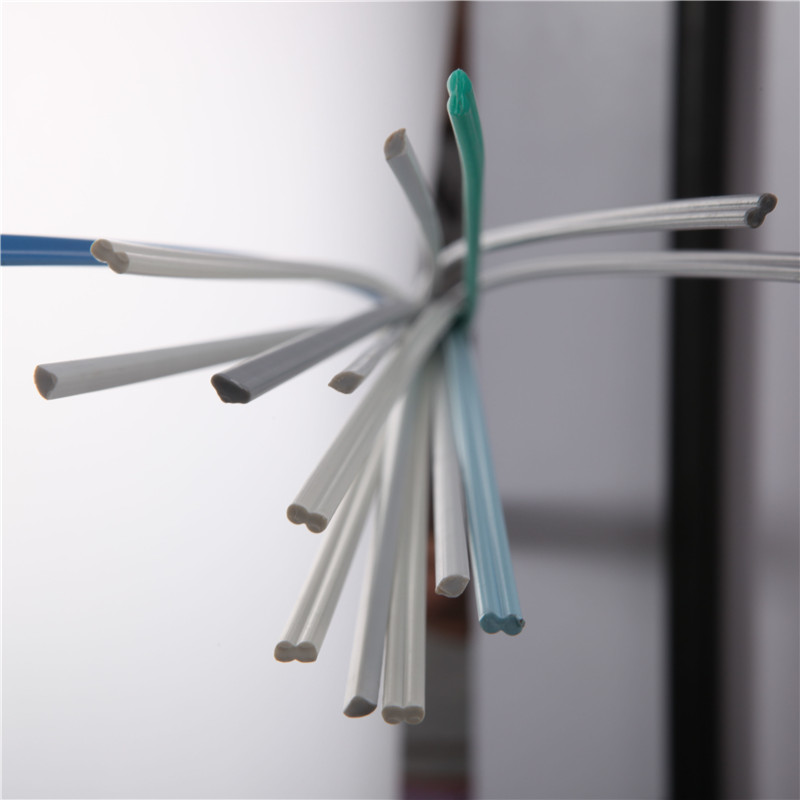Oct . 12, 2024 06:30 Back to list
Choosing the Right PVC Welding Rod for Your Projects and Applications
Understanding the Role of Welding Rods in PVC Applications
Welding rods are essential components in various manufacturing and repair processes, particularly when working with materials like Polyvinyl Chloride (PVC). PVC is a versatile plastic known for its durability, chemical resistance, and cost-effectiveness, making it a popular choice for a wide range of applications, from construction materials to piping systems. Understanding the role of welding rods in PVC applications is crucial for professionals in industries such as manufacturing, plumbing, and construction.
What Are Welding Rods?
Welding rods are long, slender pieces of metal or plastic used as filler material in welding processes. When heat is applied, these rods melt and fuse with the base material to create a strong bond. In the context of PVC applications, welding rods are typically made from similar PVC materials, ensuring compatibility and a strong fusion.
Importance of Welding PVC
Welding PVC is a common method to join pieces of this plastic securely, enabling the creation of larger structures or the repair of damaged items. The robust nature of welded joints is particularly beneficial in applications where durability and resistance to environmental factors are critical. For instance, in the plumbing industry, PVC is widely used for pipes, and welding ensures leak-proof connections that can withstand varying pressures and temperatures.
Types of Welding Rods for PVC
There are several types of welding rods available for PVC applications, and choosing the right one is essential for achieving the desired results. The most common types include
1. Extrusion Welding Rods These rods are used in extrusion welding processes where molten PVC is extruded along the joint. They provide a continuous feed of material and are ideal for large-scale applications.
2. Solid Welding Rods These rods are typically used for repair work or smaller projects. They are solid and provide a robust bond when melted into the joint.
3. Pallet Welding Rods Used primarily in the manufacturing of pallets and storage containers, these rods are designed to bond thicker materials effectively.
4. Specialty Welding Rods Some rods come with additives that enhance specific properties, such as UV resistance or improved flexibility, making them suitable for specialized applications.
welding rod pvc

The Welding Process
The welding process itself involves several steps
1. Preparation Ensure that the surfaces of the PVC pieces to be welded are clean and free from contaminants. Proper surface preparation is essential for achieving a strong bond.
2. Heating Using a heat source, typically a welding gun or hot air tool, the edges of the PVC and the welding rod are heated until they reach the melting point.
3. Applying the Rod Once the substrate reaches the appropriate temperature, the welding rod is introduced into the molten material, allowing it to melt and fuse with the existing PVC.
4. Cooling After the welding is complete, the joint must be allowed to cool undisturbed to ensure a proper bond.
Benefits of Using Welding Rods for PVC
The use of welding rods in PVC applications offers several advantages
- Strength Welded joints made with welding rods are often as strong, if not stronger, than the base material itself. - Versatility Welding rods can be used in various applications, from small repairs to large-scale constructions. - Cost-Effectiveness Welding is often more economical than other joining methods, such as adhesives or mechanical fasteners. - Environmental Resistance Properly welded PVC joints can resist moisture, chemicals, and environmental stressors, enhancing the longevity of the application.
Conclusion
In summary, welding rods play a critical role in the effective joining of PVC materials across numerous applications. Understanding the various types of welding rods and the welding process itself can significantly impact the success of projects involving PVC. As industries continue to rely on this versatile material, mastering the techniques surrounding welding rods will remain a valuable skill for professionals in the field. Whether for repairs or new constructions, effective welding ensures the durability and functionality of PVC applications, leading to safer and more reliable products.
-
Durable PVC-M Water Supply Pipes | 60-Year Life
NewsAug.04,2025
-
Premium HDPE Water Supply Pipes: Durable & Leak-Proof
NewsAug.03,2025
-
Premium PVC-M Water Supply Pipe - Durable & Efficient
NewsAug.02,2025
-
Premium PP Welding Rod: GPT-4 Turbo Enhanced
NewsAug.01,2025
-
HDPE Drainage & Irrigation Pipe - Durable, Efficient Solutions
NewsAug.01,2025
-
Premium PVC Transparent Pipe: Durable & Clear Solutions
NewsJul.31,2025

